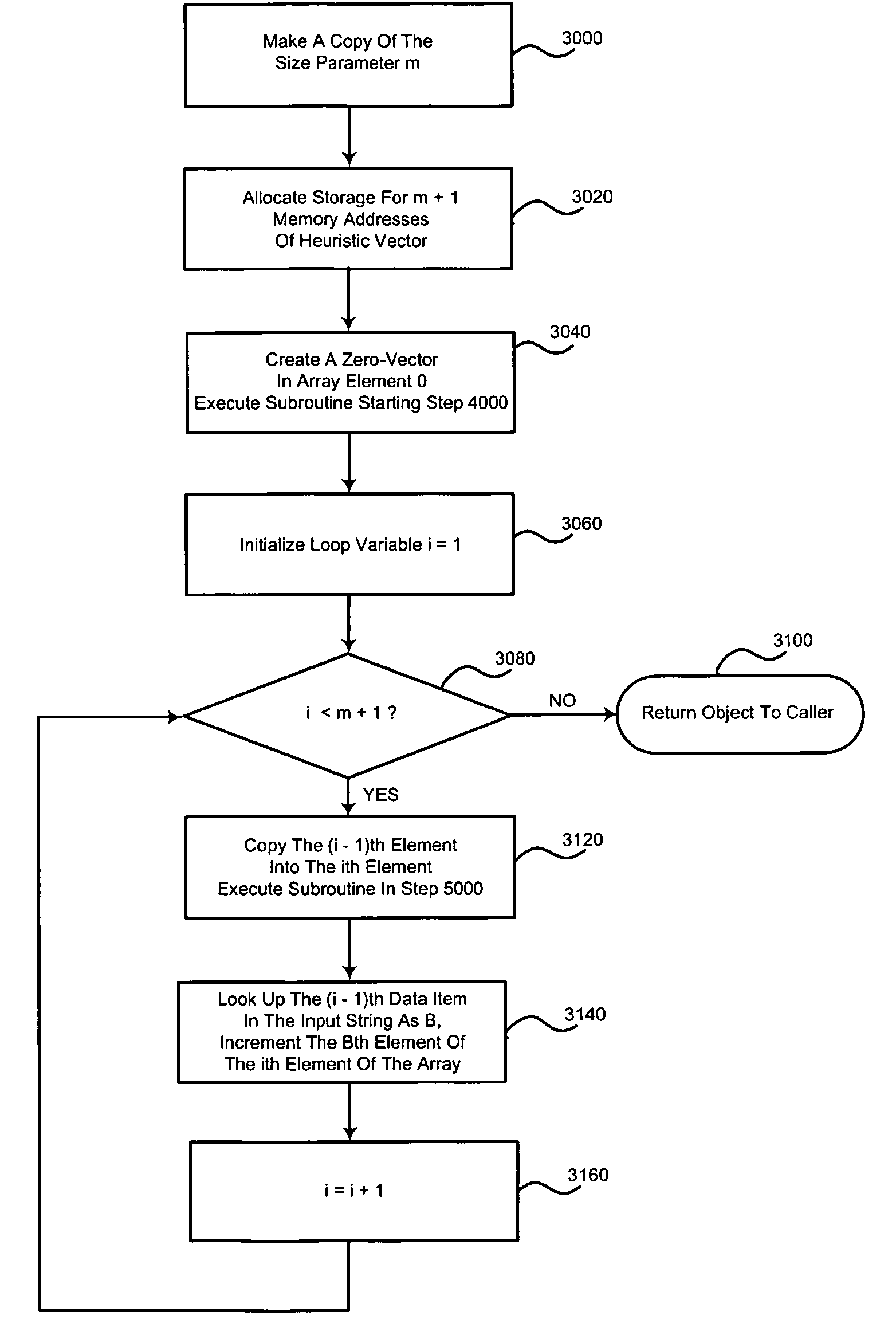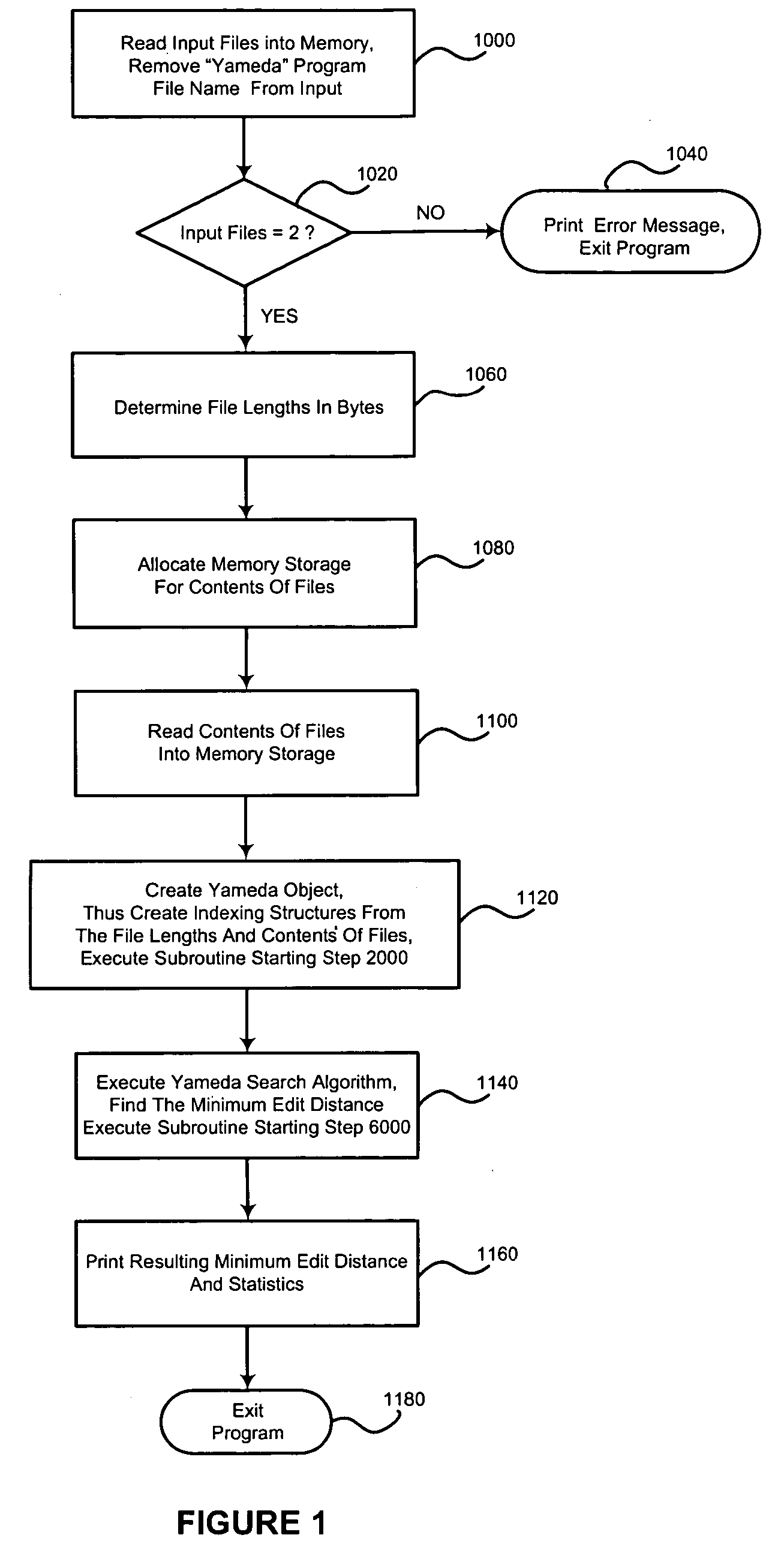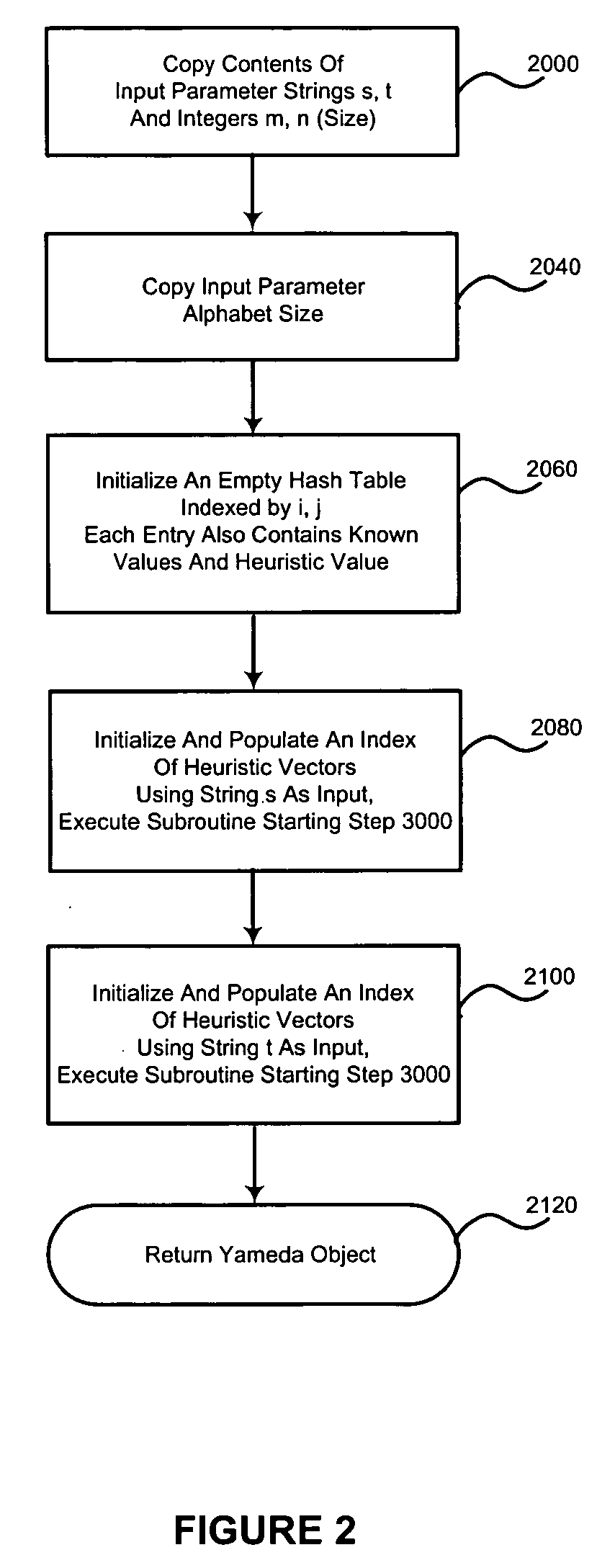Method for computing the minimum edit distance with fine granularity suitably quickly
a technology of fine granularity and computation method, applied in computing, data processing applications, instruments, etc., can solve the problems of inability to achieve the effect of improving the performance of yameda, inability to easily make meier86 algorithm inefficient, and inability to accurately calculate the minimum edit distan
- Summary
- Abstract
- Description
- Claims
- Application Information
AI Technical Summary
Benefits of technology
Problems solved by technology
Method used
Image
Examples
Embodiment Construction
[0058] The following description includes the best mode of carrying out the invention, illustrates the principles of the invention, and should not be taken in a limiting sense. The sequence of steps illustrated in the flow charts and recited in the claims may be re-ordered and certain steps may be executed sequentially or in parallel to achieve the same results. The scope of the invention is determined by reference to the claims. Each part or step is assigned its own number in the specification and drawings.
[0059] The following equations are pertinent to the invention so will be introduced now but will be described in more detail below in connection with FIGS. 8 and 9, respectively:
heur (s, t)=Σi=0a−1|Ci,s−Ci,t|
heur (s, t, u, v)=Σi=0a−1|(Ci,s−Ci,u)−(Ci,t−Ci,v)|
[0060]FIG. 1 illustrates the main routine which invokes the Yameda algorithm to search for the minimum edit distance between two strings or sequences of integers s and t by reading two files into memory and determining their...
PUM
 Login to View More
Login to View More Abstract
Description
Claims
Application Information
 Login to View More
Login to View More - R&D
- Intellectual Property
- Life Sciences
- Materials
- Tech Scout
- Unparalleled Data Quality
- Higher Quality Content
- 60% Fewer Hallucinations
Browse by: Latest US Patents, China's latest patents, Technical Efficacy Thesaurus, Application Domain, Technology Topic, Popular Technical Reports.
© 2025 PatSnap. All rights reserved.Legal|Privacy policy|Modern Slavery Act Transparency Statement|Sitemap|About US| Contact US: help@patsnap.com



